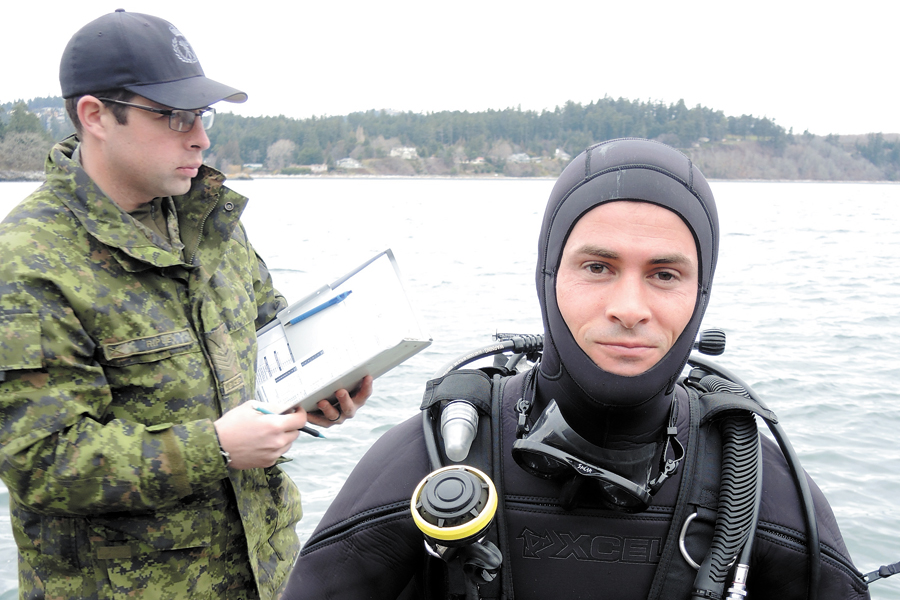Exercise Roguish Buoy: Underwater training
By Lookout on Feb 23, 2017 with Comments 0

U.S. Army diver First Lieutenant Josh Voorhees prepares for a search and recovery procedure during Exercise Roguish Buoy 2017 at the Albert Head Training Centre.
Peter Mallett, Staff Writer ~
Military divers from seven NATO countries have converged in the waters off Albert Head for Exercise Roguish Buoy 2017 as part of a month-long collaborative effort to share knowledge and skills.
Approximately 100 army divers from Canada, the United States, Belgium, the Netherlands, France and Germany are making the residences of Albert Head Cadet Training Centre their temporary homes during the month of February, and a small coastal inlet on Vancouver Island’s southern shore their classroom.
The exercise is run by the Army Dive Centre at the Canadian Forces School of Military Engineering (CFSME) in Gagetown, N.B. The exercise began in 1979 and rotates to a different location each year.
“Exercise Roguish Buoy is a great benefit for all the divers involved because it provides a unique opportunity for cross-pollination of experience, knowledge and training from Canada’s NATO allies,” said Capt Harry Morrison, Exercise Roguish Buoy 2017 Coordinator. “It’s also an excellent way for Canadian army divers to learn from the methodology of others, and find out how they approach certain common tasks.”
From a domestic perspective, Capt Morrison said Roguish Buoy is providing Canadian Forces combat engineers from CFB Gagetown, Valcartier, and Edmonton an unparalleled training experience.
Divers have been broken into four Canadian-led teams with this year’s training focusing on underwater construction, demolition, and debris clearance, along with search and recovery.
Capt Morrison says each component of the exercise has practical applications for future military deployments down the road. He cited international humanitarian efforts such as an earthquake or a hurricane as a real-life application of tasks carried out during the exercise.
“We are learning how to work together in various aspects of military engineering operations,” he said, noting the rare wintry weather that included heavy snow, wind and poor visibility hampered operations but provided a realistic backdrop for the exercise.
In one of their tasks during the first week, divers conducted a debris clearance exercise using jackhammers and oxygen cutters to break apart a giant concrete block underwater. They then used C4 plastic explosives to break up the material in an effort to clear a navigable path through the waterway.
During a search and recovery exercise spearheaded by First Lieutenant Josh Voorhees of the United States Army, he and Canadian Army Corporal Olivier Castonguay repaired a hole in a submerged metallic cube lying on the seabed. Assisted by a team of divers in the Zodiac Mark 5, the two divers descended to a depth of approximately 10 metres to locate the object and perform the recovery.
After making structural repairs to the cube using a combination of foam and plywood, they filled it with air and then guided it safely to the surface.
“It’s all about international co-operation and teamwork with our NATO allies, and the learning process is a two-way street,” said Lt Voorhees, adding U.S. divers are also sharpening and enhancing their skill set.
Filed Under: Top Stories
About the Author:





